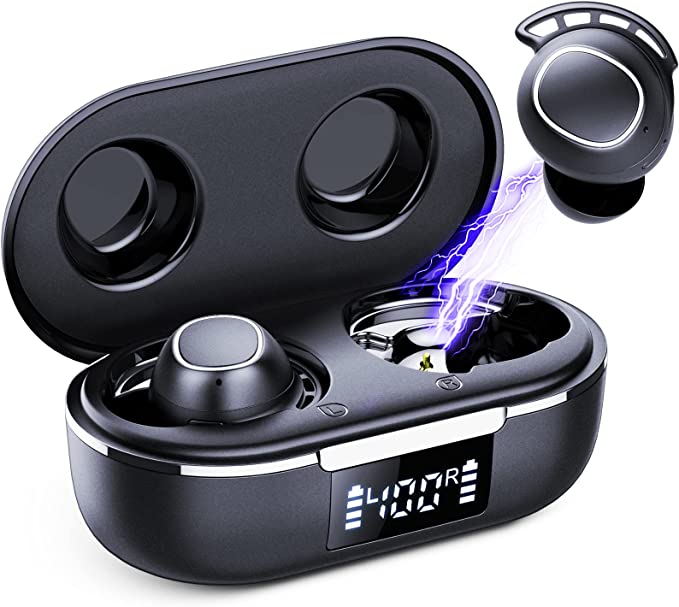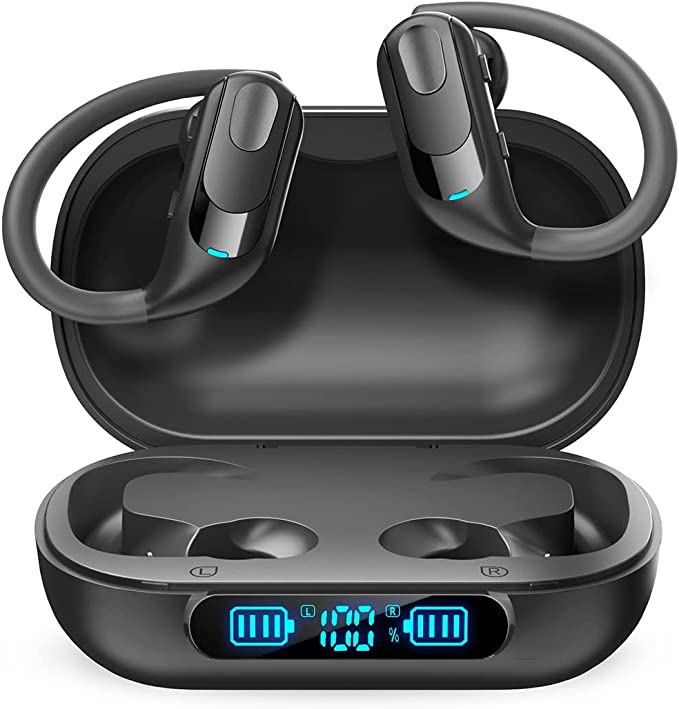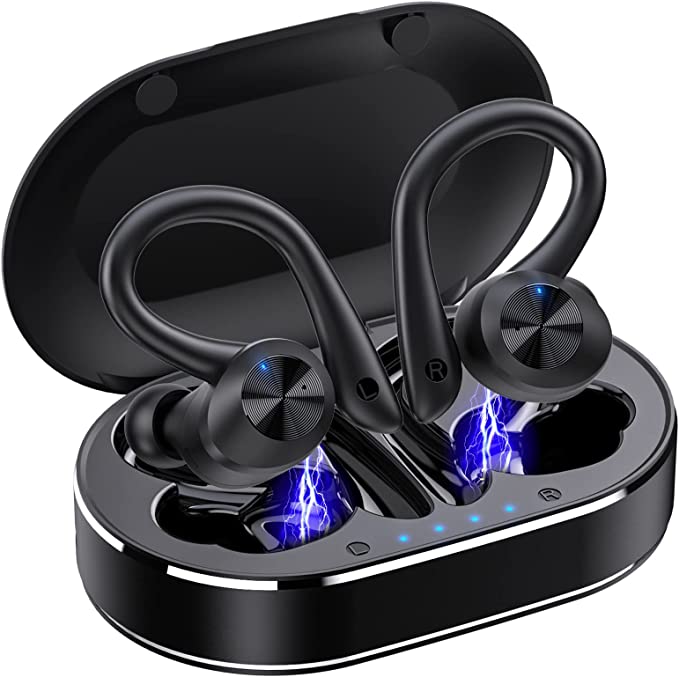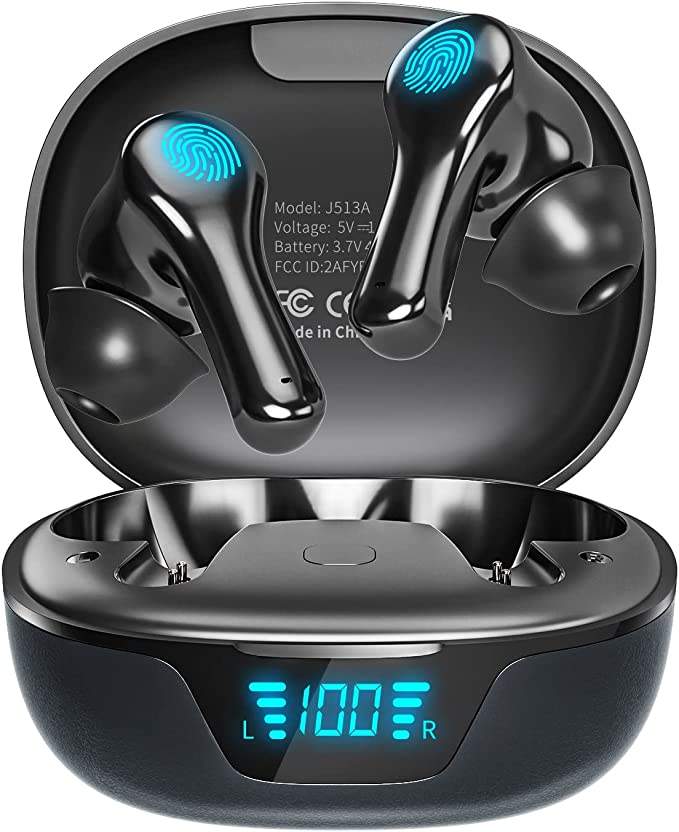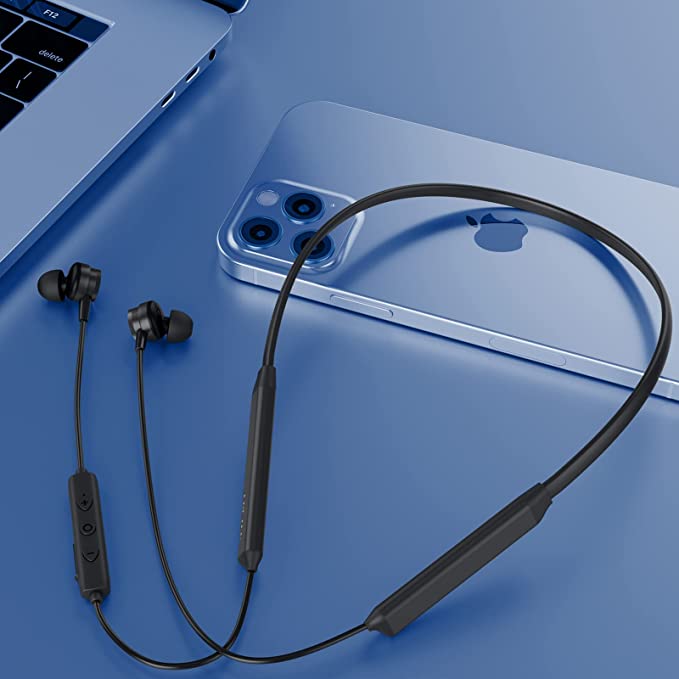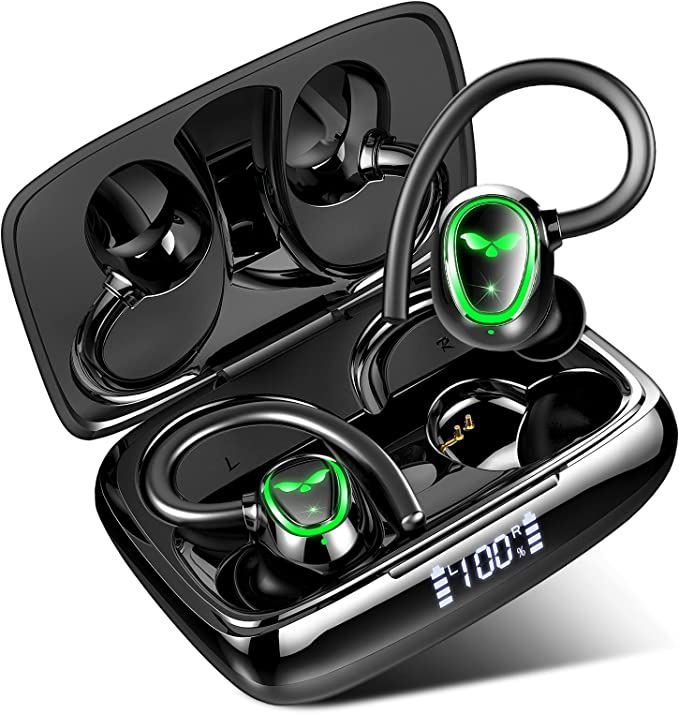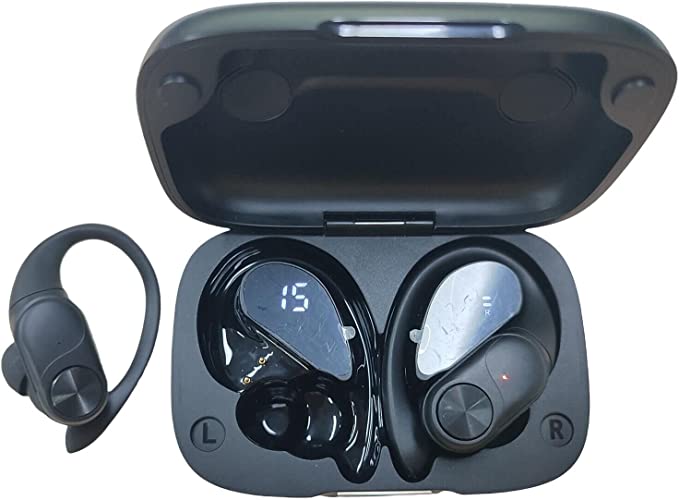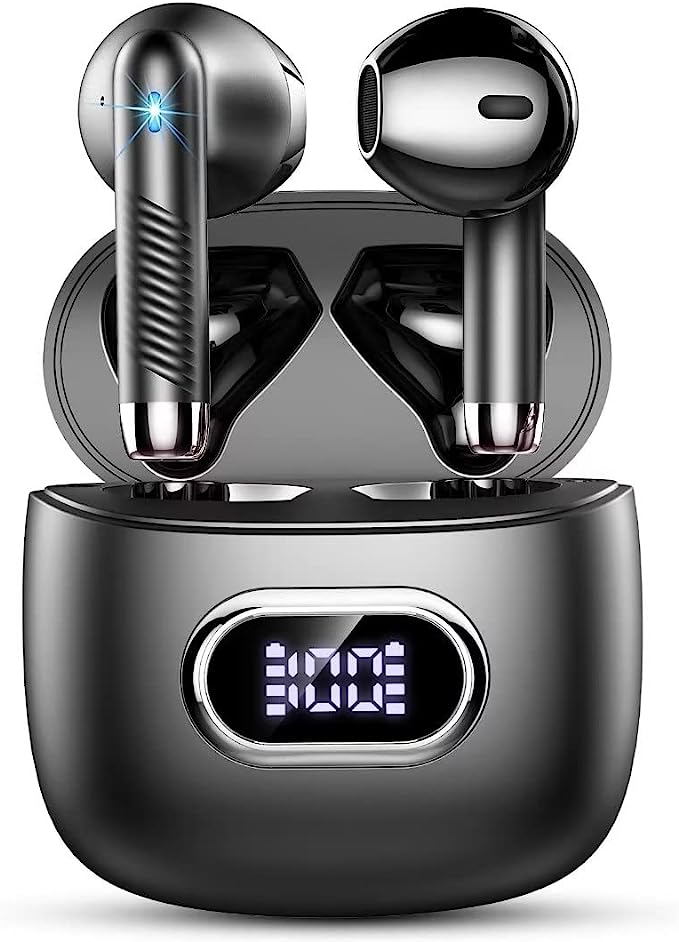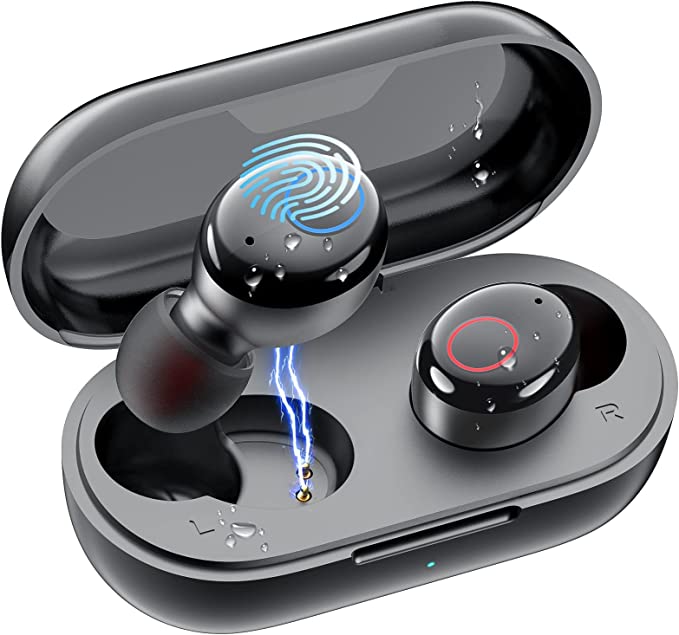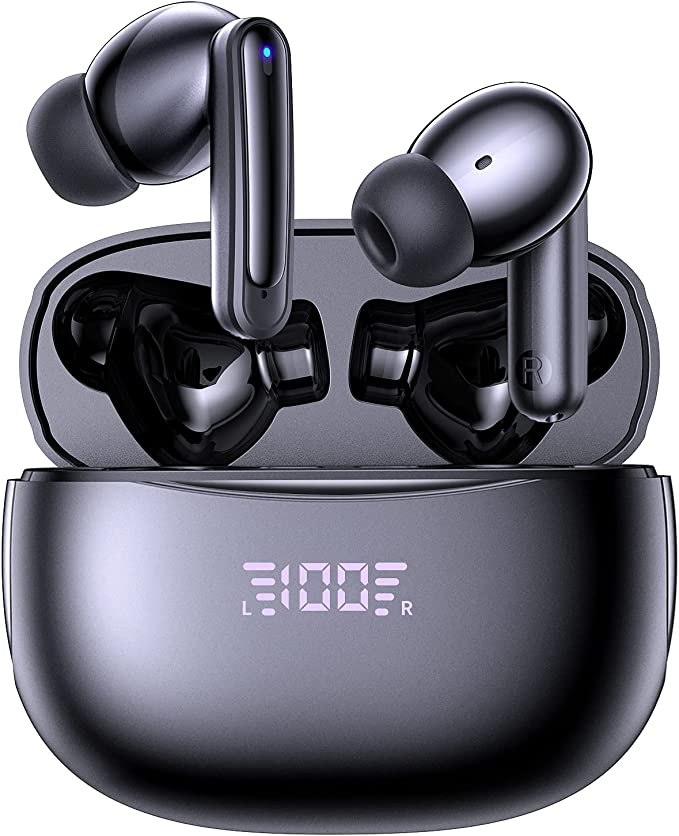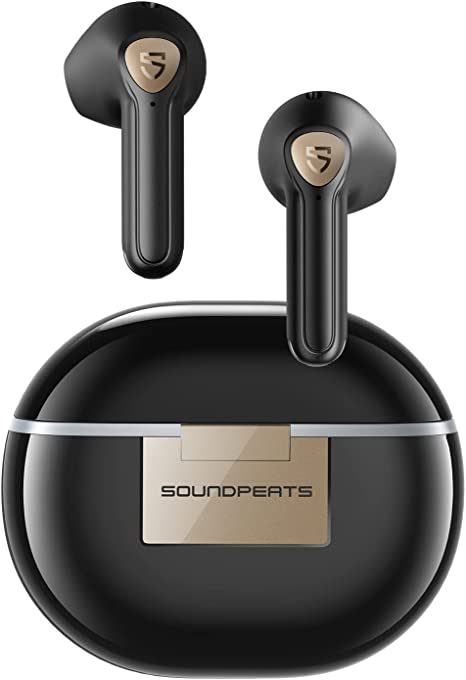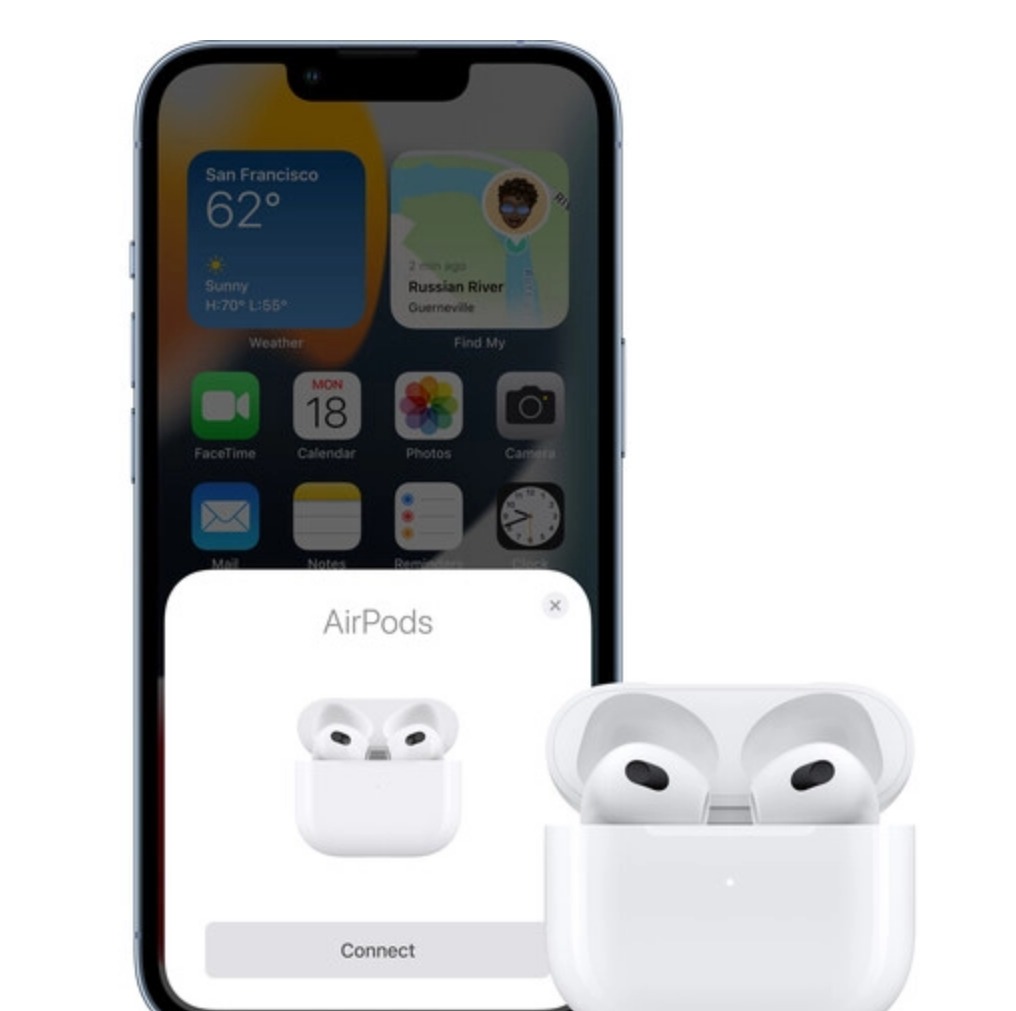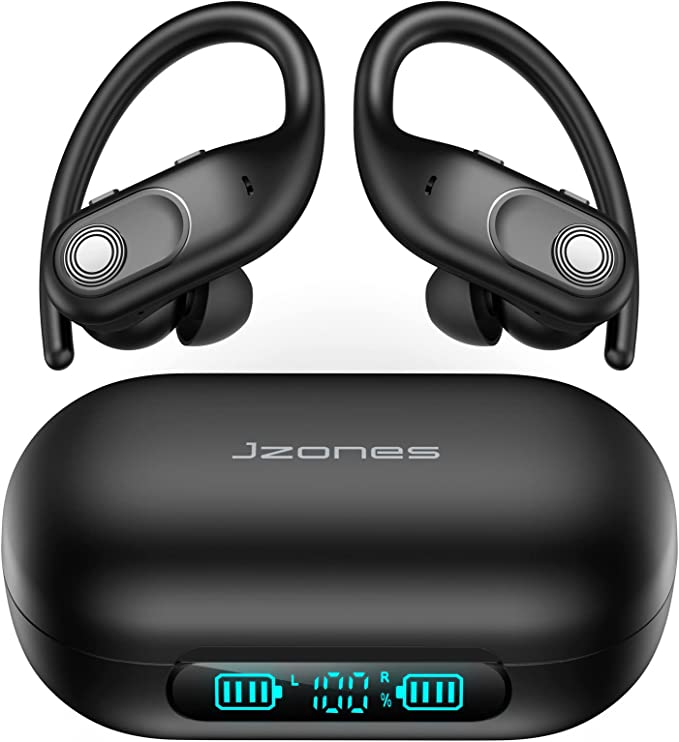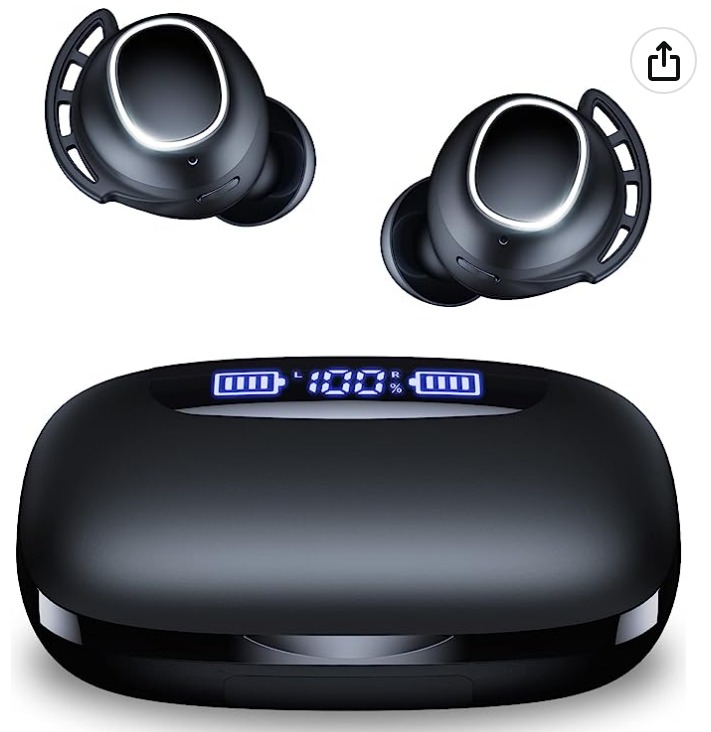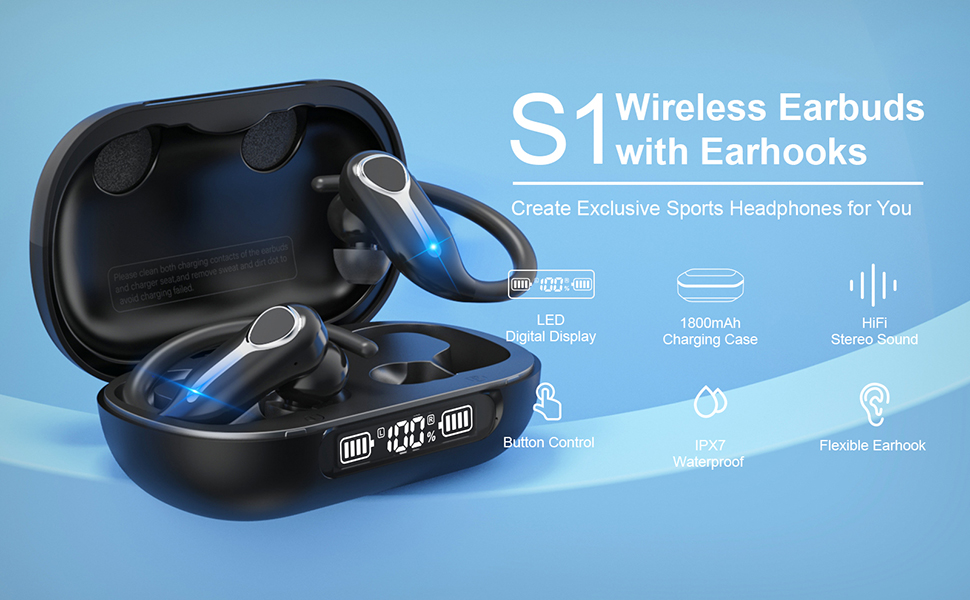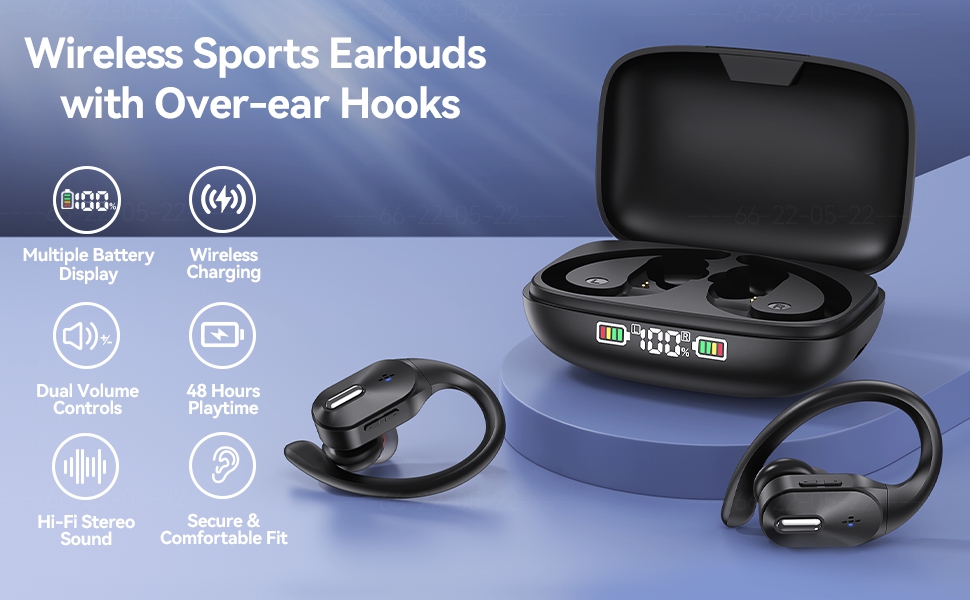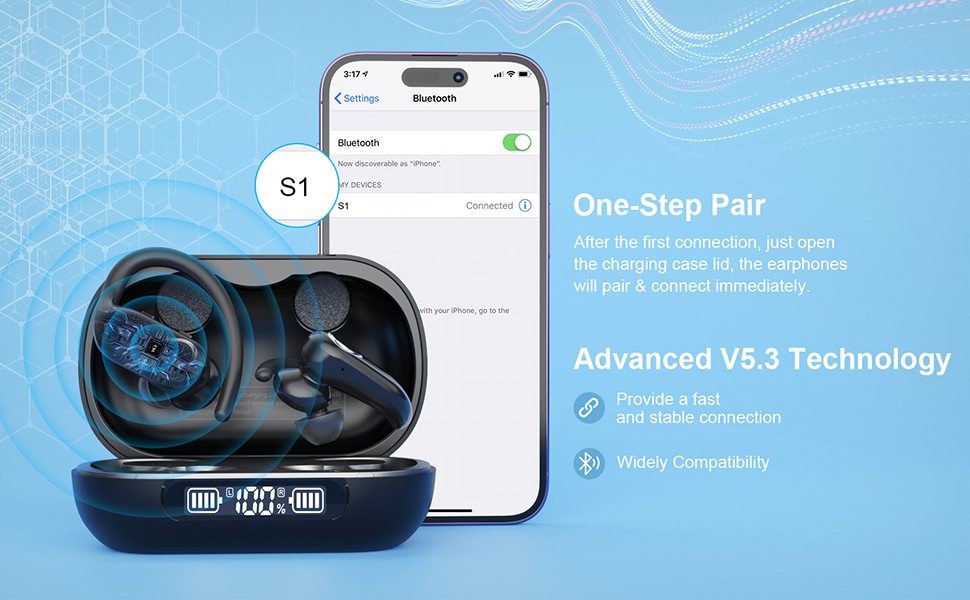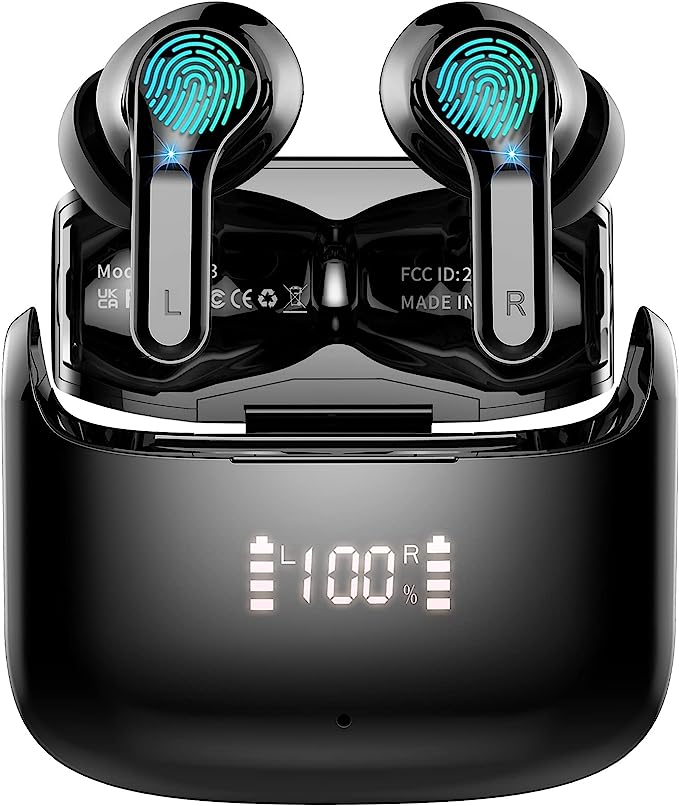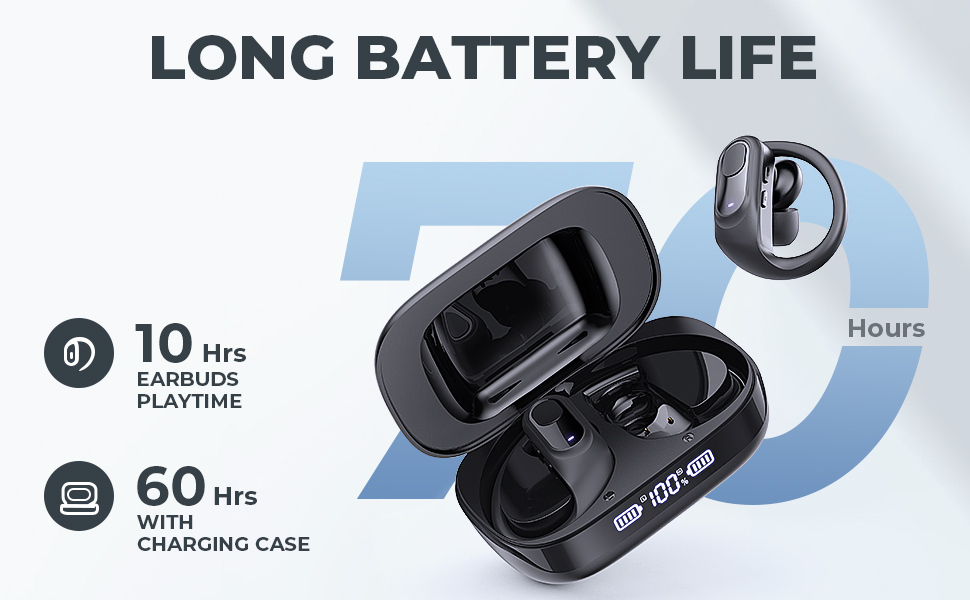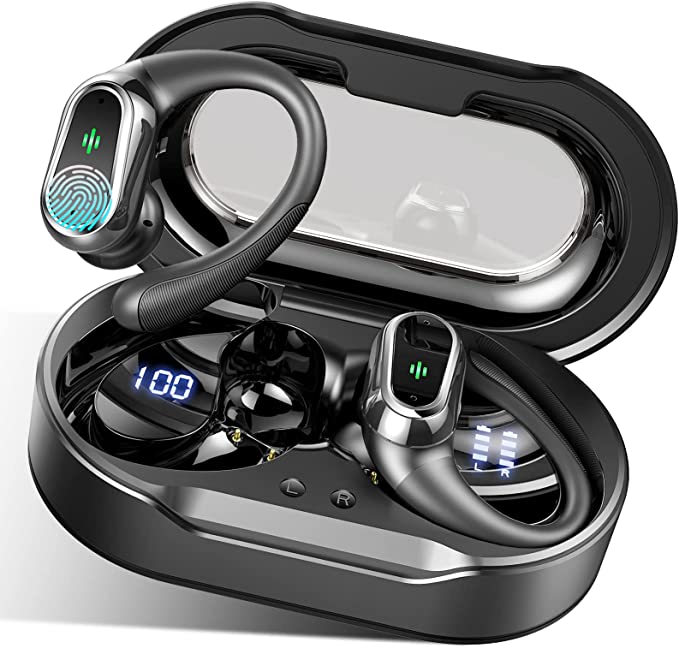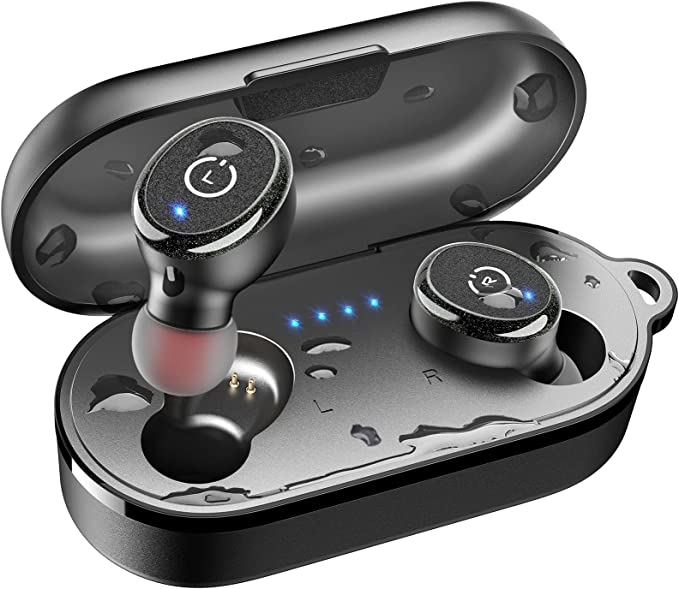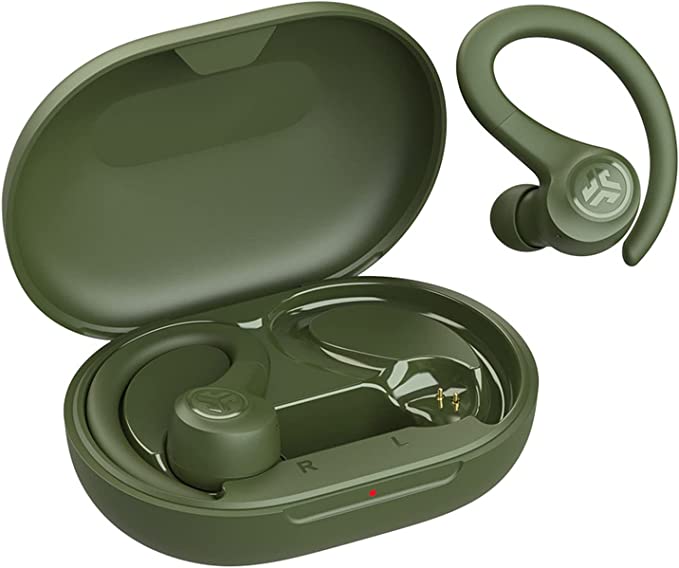BEBEN T9 Wireless Earbuds : Budget-Friendly Wireless Earbuds with Impressive Battery Life
Update on June 24, 2025, 7:07 a.m.
Ever paused to marvel at how those tiny, unassuming earbuds nestled in your ears can fill your world with rich sound or keep you seamlessly connected on calls, almost as if by magic? It’s a daily miracle for many, and devices like the BEBEN T9 Wireless Earbuds bring this sophisticated technology into reach without breaking the bank. While they promise features like “Touch Control Stereo Sound” and an impressive “35H Playtime,” let’s pull back the curtain and explore the fascinating science and engineering that make such everyday marvels possible. Consider the BEBEN T9 our case study for a journey into the heart of your wireless audio experience.

The Invisible Handshake: Decoding Bluetooth
The term “Bluetooth” is ubiquitous, and the BEBEN T9 claims to leverage “Latest Bluetooth 5.3” (though the product page also mentions 5.2 as the foundation for these benefits, the advantages described align well with modern Bluetooth iterations like 5.3). But what does this version number truly signify for your listening experience? Think of Bluetooth not just as a feature, but as a highly sophisticated, invisible conversation happening between your earbuds and your phone or computer.
The journey of Bluetooth technology, managed by the Bluetooth Special Interest Group (SIG), is a story of constant refinement. Early versions were primarily about replacing messy cables for peripherals. Today, it’s a powerhouse capable of streaming high-quality audio. One of the key advancements in versions like Bluetooth 5.3 is improved efficiency and stability. Imagine trying to have a clear conversation in a crowded room; older Bluetooth versions might struggle, leading to dropouts or crackles. Modern Bluetooth employs clever techniques like Adaptive Frequency Hopping (AFH). This allows the signal to intelligently “hop” between different radio frequencies, sidestepping channels that are experiencing interference from other wireless devices like Wi-Fi routers or microwave ovens. This is part of how the T9 aims to deliver on its promise of “stronger anti-signal interference.”
Then there’s latency – the technical term for delay. If you’ve ever watched a video where the actors’ lips move out of sync with their voices, you’ve experienced high latency. For music, a slight delay might be imperceptible, but for videos and especially gaming, it can be incredibly frustrating. Latency is measured in milliseconds (ms), and newer Bluetooth standards strive to minimize this gap. The BEBEN T9’s claim of “lower signal delay” is crucial for “perfect audio and video synchronization.” This is achieved through more efficient data packet transmission and processing. Furthermore, the convenience of “one step” pairing, where the T9 earbuds connect automatically when you open the case, is powered by the earbuds remembering previously connected devices, streamlining your daily use.

The All-Day Power Plant: Juice, Joules, and USB-C
A major draw for any wireless device is battery life, and the BEBEN T9 boasts an impressive “up to 35 hours playtime” when you factor in its charging case, with each earbud offering 4 to 5 hours on a single 1.5-hour charge. How do these tiny gadgets pack such a punch?
The secret lies largely within the Lithium Polymer (Li-Po) batteries they (and most modern portable electronics) use. Unlike their cylindrical lithium-ion cousins, Li-Po batteries can be shaped into very thin, flat profiles, making them ideal for the compact design of earbuds and their cases. They offer a high energy density, meaning they can store a significant amount of electrical energy (measured in milliampere-hours, or mAh, though not specified for T9) relative to their small size and weight. The charging case itself acts as a dedicated portable power bank, replenishing the earbuds multiple times before it needs a recharge.
And speaking of recharging, the T9 features a Type-C charging port. This isn’t just about a new connector shape; it represents a significant step forward in usability and capability, a standard championed by the USB Implementers Forum (USB-IF). The most obvious benefit is reversibility – no more fumbling to plug the cable in the correct way. But Type-C also supports higher power delivery protocols (like USB Power Delivery, or USB PD, as a general standard, though the T9 just mentions “Efficient Charge”), allowing for potentially faster charging if paired with a compatible charger. Its increasing universality means you can often use the same cable that charges your phone or laptop to charge your earbud case, reducing cable clutter. The T9’s ability to get a full 4-5 hours of playback from a 1.5-hour charge speaks to an efficient power management system within the earbuds and case.

Crafting Your Soundscape: Drivers, “HiFi,” and the Fit Factor
The BEBEN T9 promises “HiFi Stereo Sound.” “HiFi,” or High Fidelity, historically meant audio reproduction very faithful to the original recording. In the context of budget-friendly earbuds, it generally signals an aim for clear, balanced sound suitable for everyday music listening, rather than the nuanced precision an audiophile might demand from high-end equipment.
The sound itself is generated by tiny speaker drivers inside each earbud. These marvels of miniaturization typically consist of a diaphragm (a thin membrane) that vibrates rapidly, set in motion by an electromagnetic coil. These vibrations create pressure waves in the air – sound waves – that your ears perceive as music or voice. The quality and character of the sound are influenced by the driver’s size, material, and design, as well as the acoustic chamber of the earbud itself. While the T9 doesn’t specify its driver details, it relies on these fundamental principles.

The digital audio signal from your device also needs to be decoded by the earbuds. This is handled by a codec (coder-decoder). The most basic and universally supported Bluetooth codec is SBC (Subband Codec). While functional, it uses a “lossy” compression method, meaning some audio data is discarded to reduce file size for wireless transmission. More advanced codecs like AAC (favored by Apple) or aptX (common on Android) can offer better audio quality with less data loss, but both the transmitting device and the earbuds must support them. For budget earbuds like the T9, SBC is the likely default, providing a perfectly adequate experience for casual listening.
The physical design also plays a huge role. The T9 features a “semi-in-ear” (or half-in-ear) design, which differs from earbuds that create a tight seal deep within your ear canal. This has ergonomic and acoustic implications. Ergonomically, some users find this style more comfortable for extended wear, as it exerts less pressure inside the ear – aligning with BEBEN’s claim that they “better fit the structure of human ears” and offer immersion “without stuffiness and pressure.” Acoustically, a less complete seal means you’re likely to hear more of your ambient surroundings, which can be a safety benefit in some situations. However, it also means less passive noise isolation and potentially a lighter bass response compared to sealed designs. Fit is incredibly subjective; while some appreciate the openness, others, as some T9 user reviews suggest (“felt too big in my ears,” “don’t really stay in your ears very well”), might find this style less secure than alternatives with silicone tips that conform to the ear canal.

Control at Your Fingertips (And Sometimes When You Don’t Mean It)
Interacting with your audio is made convenient with the T9’s “Touch Control.” This isn’t a physical button but relies on capacitive sensing. Your body has a natural ability to store a small electrical charge. When your fingertip touches the sensor surface on the earbud, it changes the capacitance (the ability to store charge) at that point. The earbud’s internal circuitry detects this change and interprets it as a command – play, pause, skip track, answer call.
It’s a wonderfully elegant solution that eliminates moving parts. However, calibrating the sensitivity of these tiny touch surfaces can be challenging. If it’s not sensitive enough, your taps might not register. If it’s too sensitive, you might accidentally trigger commands while simply adjusting the earbud, a point echoed in one T9 user review: “any time I tried to adjust them the song would pause.” Finding that perfect balance is a fine art in product design.
The flexibility extends to how you listen. The T9 allows you to “Switch Single or Binaural Mode at Will,” meaning they aren’t limited to a main (master) earbud. Each earbud can connect independently to your device. This is invaluable if you want to keep one ear free to hear your environment, extend battery life by using one while the other charges in the case, or even share your audio with a friend.

Encore: The Symphony of Small Tech
The BEBEN T9 Wireless Earbuds, like many similar devices, are a testament to how far consumer electronics have come. They pack a surprising amount of sophisticated technology—advanced wireless communication, efficient power management, intricate acoustic design, and intuitive control systems—into a tiny, affordable package. Understanding the science behind these features, from the way Bluetooth dances through radio waves to how a sliver of lithium polymer can power hours of music, doesn’t just demystify your gadgets; it can help you appreciate the incredible engineering involved and make more informed choices as a consumer. Even if a device is budget-friendly, the underlying principles are often part of a much grander, ongoing symphony of technological innovation that continues to shape how we experience our world.


